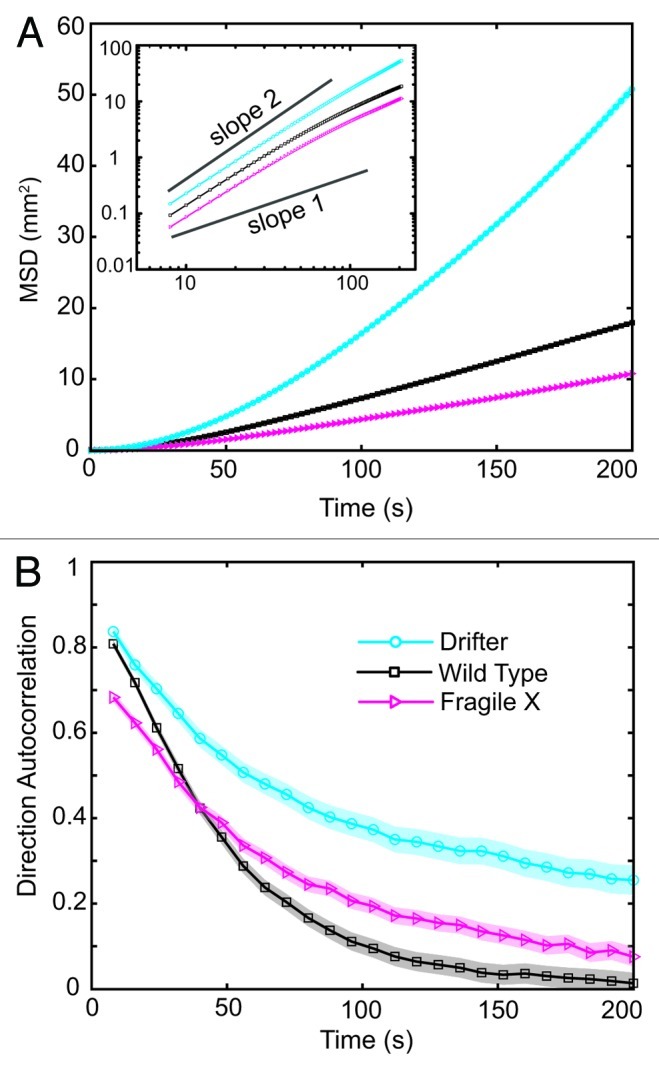
Figure 2. Fragile X larvae crawl more slowly and turn more often. (A) The Mean Squared Displacement (MSD) for crawling larvae from the Fragile X model (dfmr14) is lower than that for wild type larvae w[1118] indicating crawling defects. The smaller y-intercept, inset in (A), is indicative of a smaller mean velocity. Larvae from the Drifter strain (Df), which have decreased levels of the ion channel pickpocket1 that is over abundant in Fragile X individuals, show an opposite trend demonstrating the dynamic range of the method. (B) The Direction Autocorrelation (DAC) shows that the dfmr14 larvae turn more often than wild type larvae at small times and that the Df larvae turn significantly less. Error is standard error of the mean and is shown as a shadowed region around the trace for clarity. MSD error is smaller than the data point symbols and not shown on the logarithmic plot for clarity. Symbols and colors: cyan circles are Drifters, black squares are wild type and magenta triangles are Fragile X larvae, arranged in this order from top to bottom in the MSD plot in (A). (Number of larvae tracked: WT (25), dfmr14 (24), Drifter (17))
